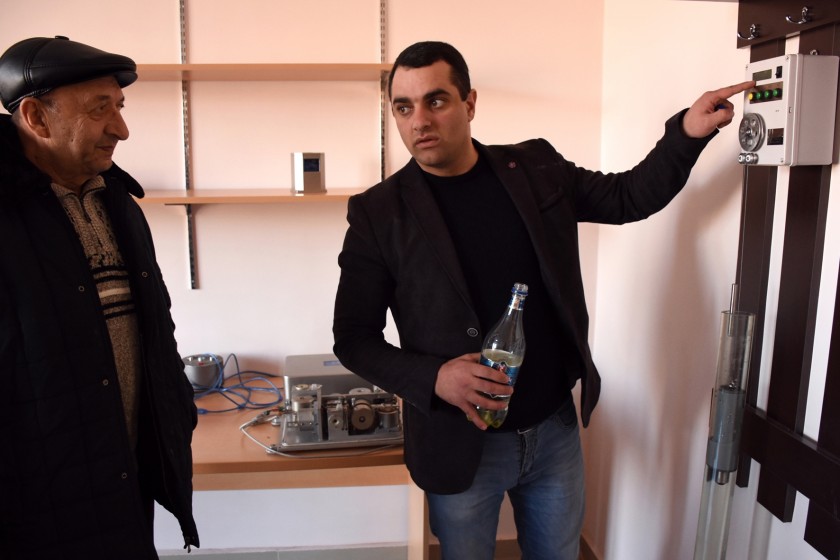
Armenia’s Seismologists: Bowed but Not Broken by the 1988 Spitak Earthquake
Welcome to #5 Vazgen Sargsyan Street, Gyumri, Armenia.
If it wasn’t for the lettering on the façade of a new building on the side of the road, a first-time visitor would be hard pressed to find the A.Nazarov Institute of Geophysics and Engineering Seismology (IGES).
From the outside, the place looks like a new private residential building. In our prior coverage of Armenia’s scientific institutions, all the buildings we’ve visited have been Soviet holdovers in need of renovation.

It’s also one of the few scientific/research institutions located outside Yerevan, Armenia’s capital.
“The scientists working in huts were heroes”
John Karapetyan, who’s served as director of IGES since 2013, notes that the institute, was founded in Gyumri in 1961 out of necessity. The region, particularly Gyumri, lies within an active seismological zone.
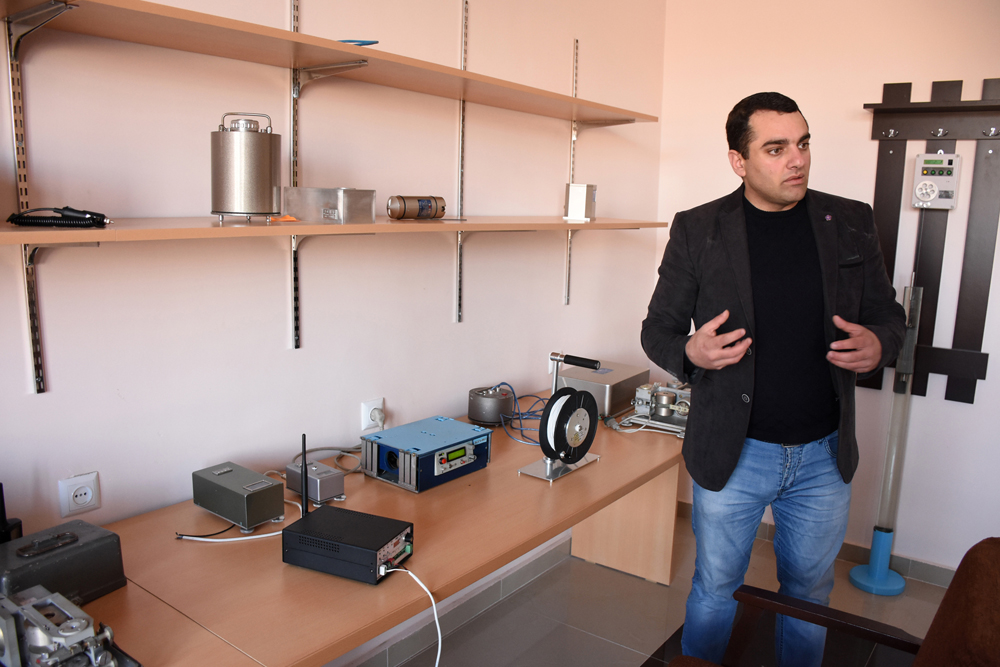
The institute also felt the effects of the 1988 Spitak Earthquake. The IGES’s former building, located at the same site, was destroyed. For the next 25 years, researchers were forced to work in makeshift huts. Those structures still stand not far away. To point out the disparity, Karapetyan escorts us there along a muddy road.

The institutes laboratories and offices were housed in these units. The hut once housing the library is full of water. The insides are rotted.
Karapetyan says that scientists were still able to come up with new and innovative ideas despite the terrible conditions. Their most difficult chore was to host international guests at the IGES. Outside visitors couldn’t comprehend how Armenian seismologists could work and produce in such conditions.
“Our people working in those conditions were heroes,” says Karapetyan, who has worked at the IGES since 2004.
 |
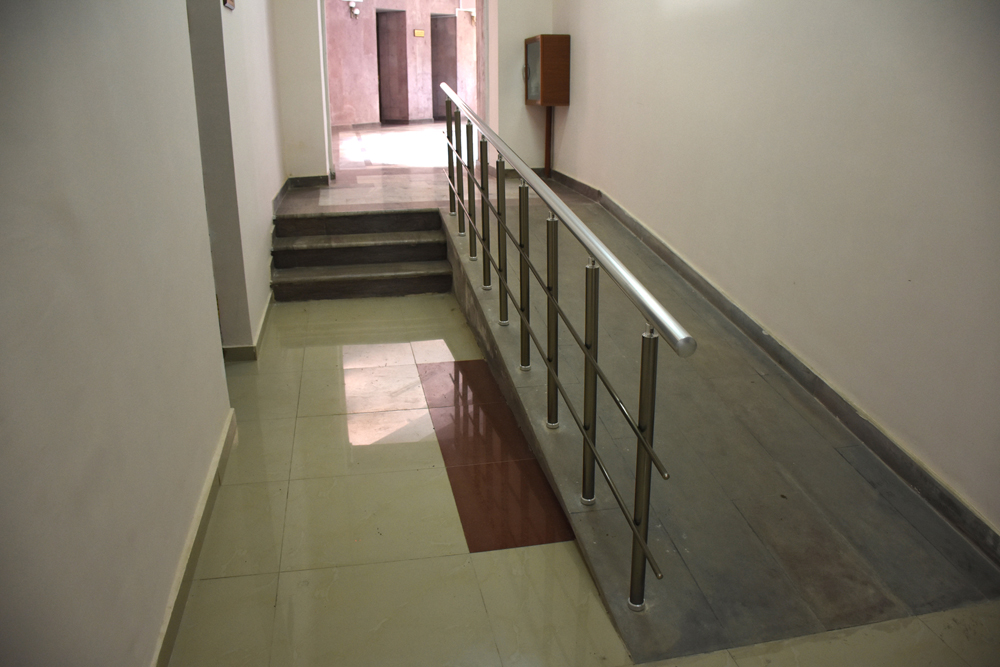 |
The IGES director says that the new building provides all necessities for scientific research. The building is centrally heated, and wheelchair accessible ramps have been installed. Karapetyan shows us the conference room, an auditorium for various functions, the dining room and library. The IGES has everything needed to organize and hold a conference; nothing is ordered from the outside.
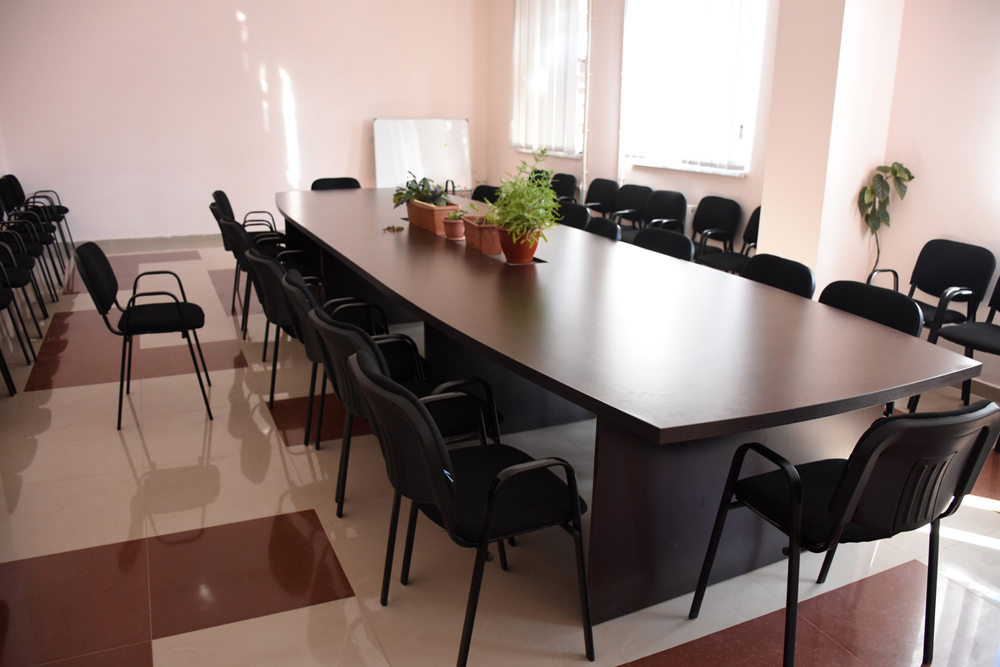 |
 |
A Rich History
Armenak Nazarov (1908-1983), the Paris-born seismologist who founded the IGES, and who it’s named after, not only bequeathed a wealth of theory but also equipment that is still being used.
“Seismology is an important discipline. Full-time monitoring apparatus is a must to keep an eye on seismic activity. There’s also the issue of monitoring strategically important sites like reservoirs, the atomic power plant, and electric power stations. These are the institute’s main tasks,” Karapetyan says.
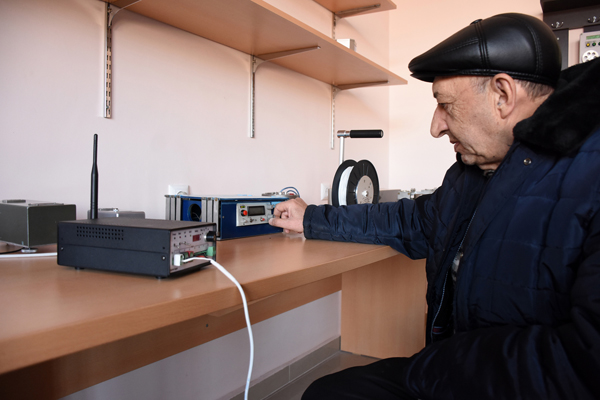 The ISGE’s eleven laboratories are divided into five divisions. Ashot Gasparyan, who’s worked at the Geo-Physical Equipment Production Division for 45 years, recounts that the unit had some 150 employees during the Soviet period. Every month, the unit churned out 150 seismic counters, to be sent to other Soviet republics.
The ISGE’s eleven laboratories are divided into five divisions. Ashot Gasparyan, who’s worked at the Geo-Physical Equipment Production Division for 45 years, recounts that the unit had some 150 employees during the Soviet period. Every month, the unit churned out 150 seismic counters, to be sent to other Soviet republics.
They were so busy, says Gasparyan, that they couldn’t fill all the orders on time. Back then, the IGES collaborated with Moscow’s Shirshov Institute of Oceanology. Gasparyan proudly points out that their manufactured equipment has been installed at one of Syria’s reservoirs and in Cuba’s atomic power station, that’s since defunct.
From Theory to Business
Director Kara[etyan takes pride in the eight pieces of IGES-produced equipment that bear the label “Made in Armenia”. Not only can the institute’s scientists transform theory into practical application, but they’ve also made improvements on previously produced equipment. For example, their seismic measuring apparatus used to weigh some eight kilos per unit. Now they weigh less than two.

The IGES’s research is also being applied in the housing, environmental, military manufacturing and other sectors.
Karapetyan points out that serious work is underway to ensure the seismic safety of buildings in Armenia. Institute equipment is also used to measure and manage water levels in the country’s reservoirs. An automated cableless monitoring system is now available that provides daily reservoir data.

“We can install that system, for example, at the Marmarik Reservoir,” says Karapetyan. “In case of an accident, we receive an SMS message. It’s like an early warning system.” This system is currently only installed at the Geghardalitch Reservoir.
As to why only one out of Armenia’s 85 reservoirs is outfitted with this technology, Karapetyan says the institute proposed the idea, but it’s ultimately up to the government to prioritize the top problems facing the country and draft a road map to solve them. This would take a lot of money.
“There are reservoirs where seismic counters are installed, but they’re dated. Science advances yearly. We must produce at the same rate. A tragedy only needs to happen once,” says Karapetyan.
Sinkhole activity also must be monitored in Armenia, he says, adding that the institute has crafted sensors to do just that.
A Shortage of Young Researchers and Wages, Coupled with Old Equipment
Director Karapetyan says the institute’s main problem is holding on to young scientists. Only 35 of the institute’s 90 staffers can be considered young. Wages are low. Fifteen staffers receive a minimum monthly net salary of 55,000 drams (US$ 115.00). The highest net salary is 140,000 drams.
State Financial Assistance to the IGES (2012-2017) (in AMD)
Red - Maintenance and Advancement of Infrastructure
Blue - Thematic and Targeted Research
To compensate for the low salary levels, Karapetyan says the institute actively seeks grant money. In 2015-2017, employees received some twelve grants. The largest international donors are the Joint Institute for Nuclear Research (Russia), the Japan International Cooperation Agency (JICA), the German Agency for International Cooperation (GIZ), and Germany’s KfW Development Bank.
The IGES also provides graduate education in the fields of Seismology and Seismic Resistant Construction, Geo-Physics, and Urban Construction.
The second challenge facing the IGES is a lack of equipment corresponding to international standards.
40% of the IGES’s 2016 budget derived from contractual work with various organizations and institutions. Much of the money is used to purchase modern equipment and to offer young professionals an enticing adequate salary.
Director Karapetyan also plans to market equipment produced by Armenian scientists to Europe.
Photos: Narek Aleksanyan
 Videos
Videos Photos
Photos




Write a comment